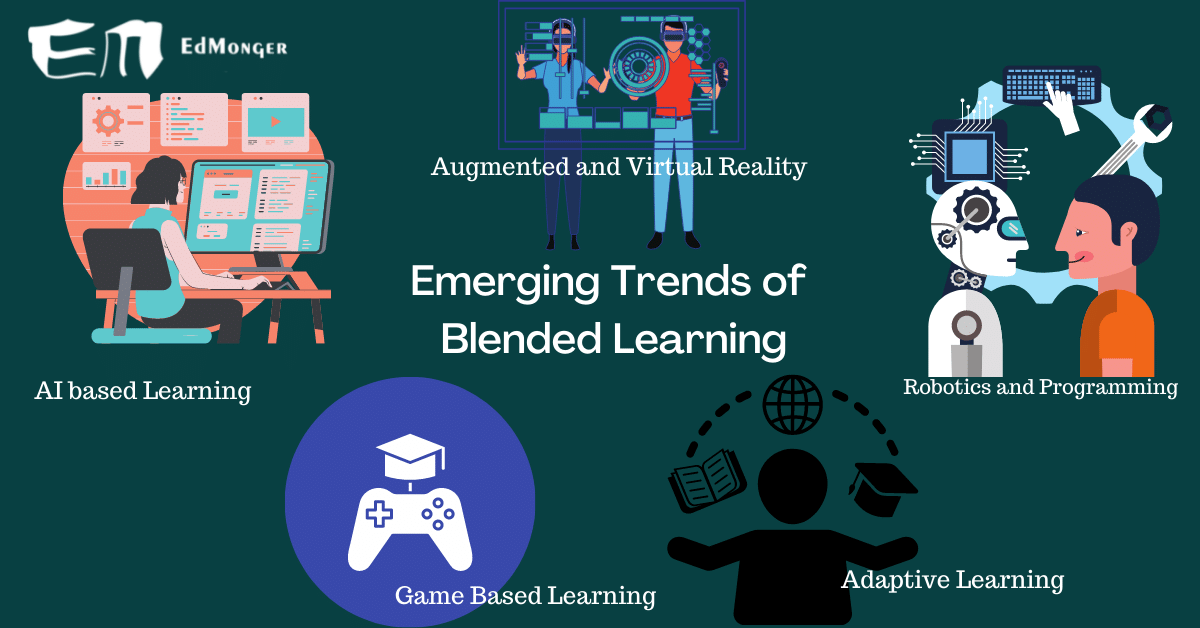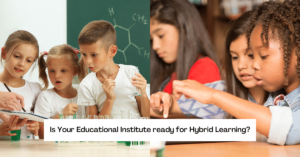The experience of Blended Learning has given the learners freedom of self-paced learning with a higher retention rate. There are so many promising technologies available to make the virtual learning environment (VLE) a huge success in blended mode.
From managing the learner’s activity to coaching them online, many free, as well as paid software, are available. There is no doubt that the advanced use of multimedia in synchronous and in asynchronous modes of teaching-learning has made it fun and engaging.
However, blended learning is not just setting up a mix of online and offline learning with some videos and digitized content but there is a shift in technology now and then to make it a more powerful and resourceful way of educating.
This article will talk about emerging trends to enhance the blended classroom experience.
Get details of tech integration: How to integrate technology in Blended Learning?
AI-based Online Coaching
With an increasing landscape of the coaching industry and learners accessing the training in virtual mode, artificial intelligence-based one-on-one online coaching is a trending way to empower oneself. The students get real-time feedback through AI-based coaching. This form of training is as powerful as real instructor-led coaching.
Edtech company vCoach is using an AI-based- training platform for helping students with soft skills coaching through the least possible L&D involvement.

Cloud-based management
In a traditional setup things used to be managed through keeping records and manually updating and tracking but in VLE the institutions have got the ease of by using Software-as-a-Service (SaaS), cloud-based management tools like MOODLE, BLACKBOARD free tools like GOOGLE classrooms.
In India, many B2B edtech companies like LEAD School, Teachmint, and Extramarks are coming up with various tools to manage the digitalisation of schools or universities at a fingertip.
Must read: How to choose the right LMS for an educational institute?
Levelling up through Robotics and Programming
“Indian industries are quickly reaching automation for enhancing the production volume, accuracy, and safety. The country’s robotics market was evaluated at 4,564 units in 2018 and is estimated to grow at 13.3% CAGR from 2019-2024”
Statistics provided by Bisinfotech clearly show that how rapidly India is growing in terms of the Robotics and education industry will not be untouched.
The influence of robotics in education has alarmingly increased in the last decade. Various STEM programs and robotics initiatives help in finding better solutions in all types of industries. Educational institutions are incorporating STEM and Robotics programs for better computational thinking, critical thinking and problem-solving skills to acquire 21st-century skills.
Game-based learning
Gamification in blended learning enhances the learning experience but here we’re talking about game-based learning which is not gamification but gamifying the concept with a learning object.
Though Game-based learning has come into the picture and it’s taking its time to gain momentum. There are various technologies and tools available for game-based learning.
Some of the examples
Digital games
Real life games
Drama
Open-door games
Board games
Related: What is a Bended classroom? how to create it?
Enhance the learning experience with Augmented reality and Virtual reality
AR and VR are emerging as the most promising technologies in the education sector as they are providing a better user experience with cost-effectiveness.
When included in the classrooms, students can learn better and live interaction with the objects helps to perform better in various science experiments and give a 3-D vision to their thoughts. Schools and colleges are including AR/VR for blended and online learning models.
Serving all Learners’ needs through Adaptive Learning
Thanks to adaptive learning aka personal learning, now each student has the freedom to learn at his speed and in his way respecting the personal need of each child.
In Blended Learning VLE is designed in a way where each student can retake the tests and attempt a different types of questions to display their understanding. Computer-based tests are the supporting element of learning.




